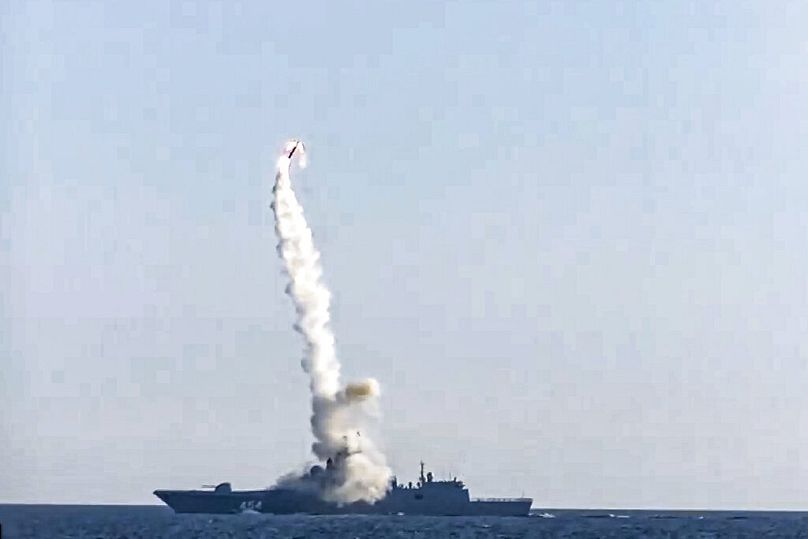Russia's military says it has used hypersonic missiles for the first time ever, during the Ukraine war. But what are the capabilities of this new weapon?
The Russian army said on Saturday that it fired hypersonic missiles in Ukraine, the first known use of the new weapon system in a combat environment.
Defence Ministry spokesperson Igor Konashenkov says the 'Kinjal' — which means dagger in Russian — weapon destroyed "a large underground warehouse of missiles and ammunition" in western Ukraine.
Vladimir Putin has described hypersonic weapons as "invincible", but what exactly are they?
Moscow claims these missiles fly at exceptionally high speeds — up to Mach 10, or 12,000 km per hour — and that combined with manoeuvrability make it extremely difficult or impossible to intercept. Some Western military experts think however that Russia might be exaggerating the capabilities of their air-to-ground hypersonic weapons.
"The hypersonic missile has a greater penetration capacity and destructive power due to its very high speed," explains military analyst Vassili Kachine.
Another military expert, Pavel Felgenhauer, said that using the Kinjal missiles doesn't give Moscow a strategic advantage, but it's more of a psychological advantage.
"Basically, it doesn't change the battlefield, but it certainly has an effect in terms of psychological propaganda, to scare everyone" he explained.
Moscow has developed this range of hypersonic weapons to be able to evade defense systems such as the American missile shield in Europe, but China has also successfully tested a hypersonic glider, and North Korea claims to also be developing hypersonic weapons.
"The United States does not have this weapon for the moment," notes Vassili Kashin.
Different classes of Russian hypersonic weapons
Kinjal - Dagger:
First successfully tested in 2018, Kinjals hit all their targets during trials at a range of 1,000 km to 2,000 km, according to the Russian Defence Ministry. But this range can be extended because they're fired from jets, in particular the Mig-31.
Avangard - Vanguard:
Russia's hypersonic Avangard hypersonic glider missiles are capable of changing course and altitude at very high speeds, making them "virtually invincible" according to Putin, who compares the scientific and military breakthrough of their development "to the creation of the first artificial satellite of the Earth", the famous Sputnik.
Successfully tested in December 2018, their speed then reached Mach 27 – or 27 times the speed of sound – and hit a target located around 6,000 km away, according to the Russian Ministry of Defence. They were put into service in December 2019. Avangard hypersonic gliders are capable of carrying nuclear payloads.
Zircon:
Zircon hypersonic missiles are fired from a surface ship or submarine. The first official test launch was in October 2020 and it flies at Mach 9 to hit targets on land or at sea.
At the end of December 2021, Vladimir Putin announced a first successful test firing of a Zircon salvo.
Other tests have taken place since October 2020 in the Russian Arctic, in particular from the Admiral Gorchkov frigate and a submerged submarine.












